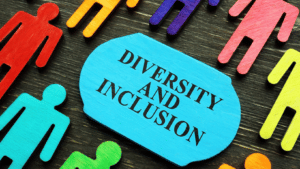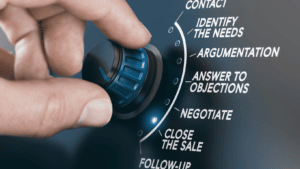One of the best Customer Service stories we saw in the 1980s came from the adoption of Total Quality Management (TQM). Apparently, companies which implemented TQM during that time were able to improve customer satisfaction and consistently met customer expectations.
It was not easy, but the emphasis that firms placed in their strategies, data and effective communication brought about quality discipline into the culture and activities of those firms.
Fast forward to today – akin to TQM, Human Design Thinking (HDT) is able to help unleash people’s full creative energies and find solutions with a strong focus on Customer Experience. This systematically upgraded their skills for challenges that go far beyond the traditional job requirements.
With advancing technology and evolving customer behaviour, entrepreneurs find it critical to implement HDT into their business models for continual growth. Human Design Thinking consists of 5 stages – Customer Discovery, Idea Creation, Prototyping, Testing and Implementation.

Why is Human Design Thinking important?
Time and again, Human Design Thinking has proven to be relevant and beneficial to innovation of new ideas and products in the long run. It is a mindset and a methodology which aims to address the biases and behaviours that hamper human creativity in order to stimulate creation of new ideas. In addition, it can be integrated in any products, processes or services within an organization.
One of the most common ways that businesses can use Human Design Thinking is in the creation of demand-based products and/or services. Eg. A company may use Human Design Thinking to create a video game that will ensure that it serves both the social and educational needs of the children playing it, thus making the video game more demand-based.
Human Design Thinking is an important element when it comes to creation of demand-based products for the following reasons:
- Human-centered
- Creative and playful
- Iterative
- Collaborative
- Prototype driven
The 5 Phases In Human Design Thinking
By now, you probably know exactly why more companies than ever, are implementing Human Design Thinking to ensure that their existing products and/or services serve the needs of their target markets. Let’s take a closer look at the 5 phases of the Human Design Thinking process below:
Customer Discovery
The Human Design Thinking process starts with the customer discovery phase. What usually happens in this phase is documenting in a brief what your customers’ wants and needs are as well as their divergent interests and opinions.
Eg. If your business is an oil changing company, there probably won’t be a wide range of methods available for learning more about your customers. How would you discover the psychological and emotional needs of your customers?
The answer simply lies in empathizing with your customers or putting yourself in their shoes. By doing this, new insights are gained and buyer personas can be created to reflect realistic situations, and ultimately, provide what is meaningful to them.

Idea Creation
Idea creation is the literal action of forming ideas, or as many ideas as possible before real-world application and implementation. By going through this phase, you can create more Human Design Thinkers in your company as it grows, and potentially come up with new strategies and/or products in which to develop or improve.
In order for this to happen, three questions need to be pondered on a regular basis – What? How? Why? Often, our work environment requires us to focus 100% of our time on the job, leaving no time to ponder these three questions. This can be very frustrating because we cannot allow curiosity, inquisitive behaviour and constant criticism affect our work attitude.
Prototyping
Breakthrough innovations and ideas never arrive the same from their ‘primitive form’. They always begin via an experimental process with three major elements – building prototypes of varying degrees of fidelity, capturing design concepts and testing on users. This happens before evaluation of which prototypes will actually be adopted by the market.
One of the best advantages of prototyping is that you can prevent unnecessary costly errors. Eg. You may be developing a new product but are not sure if the target market can accept it, so you become the first user to your own product in order to first identify how useful the product is. That way, you can ‘test’ the physical representation of your own idea before it undergoes approval for manufacturing.

Testing
Testing is an integral part of Human Design Thinking because end-users’ feedback and suggestions can be collated in a timely fashion. Whenever the prototypes are put to test, purposeful insights are gathered where the data can be organized, based on a structure called ‘Feedback Capture Grid’. What this structure does is to learn the likes, wish list, questions and ideas of the various prototypes.
This structure is essential because it helps to save time and resources in the Testing phase as prototypes will be optimized based on the feedback from end-users. It will also give you the benefit of speed, moving rapidly from testing a prototype to implementing the iteration of ideas to the target market. Allowances for alterations and refinements are possible during this phase because as the saying goes – “If a picture is worth a thousand words, then a prototype is worth a thousand alterations”.
Implementation
This is the final phase of the 5-phase process, and in essence, it is where the focus is. Implementing the complete products, services, or internal processes into your organisation. Depending on what is being implemented, you need to understand that learning the lingo is just the beginning, but to really embrace the principles of these phases, you need to put what you are learning into practice because every innovation is unique!
Creativity is the heart of innovation so asking these questions frequently – “What problems need to be solved?” and “How do I think outside the box?” will help drive innovation. Once a promising prototype is found, continue to explore it from different angles. What problems do the prototype solve? How do we gather feedback and maximize learning? If the focus is on these variables, you are definitely on the right track!
In summary, Human Design Thinking is no longer optional for businesses. It has become an important and critical key to business success. Companies need to drive themselves to innovation to stay ahead of competition.
Do you need to understand how to implement human design thinking to improve processes and have innovation to create new products in your organization? Write to us at info@businessacademia.co
Business Academia’s Vision
Our goal is to connect the space between Business Goals, Results and People’s Engagement with consultancy services, tailored experiential workshops and training. We use effective facilitation methods such as Design Thinking to define, together with you, how to engage and motivate people to the desired Change and Action.
More information @ www.businessacademia.co



